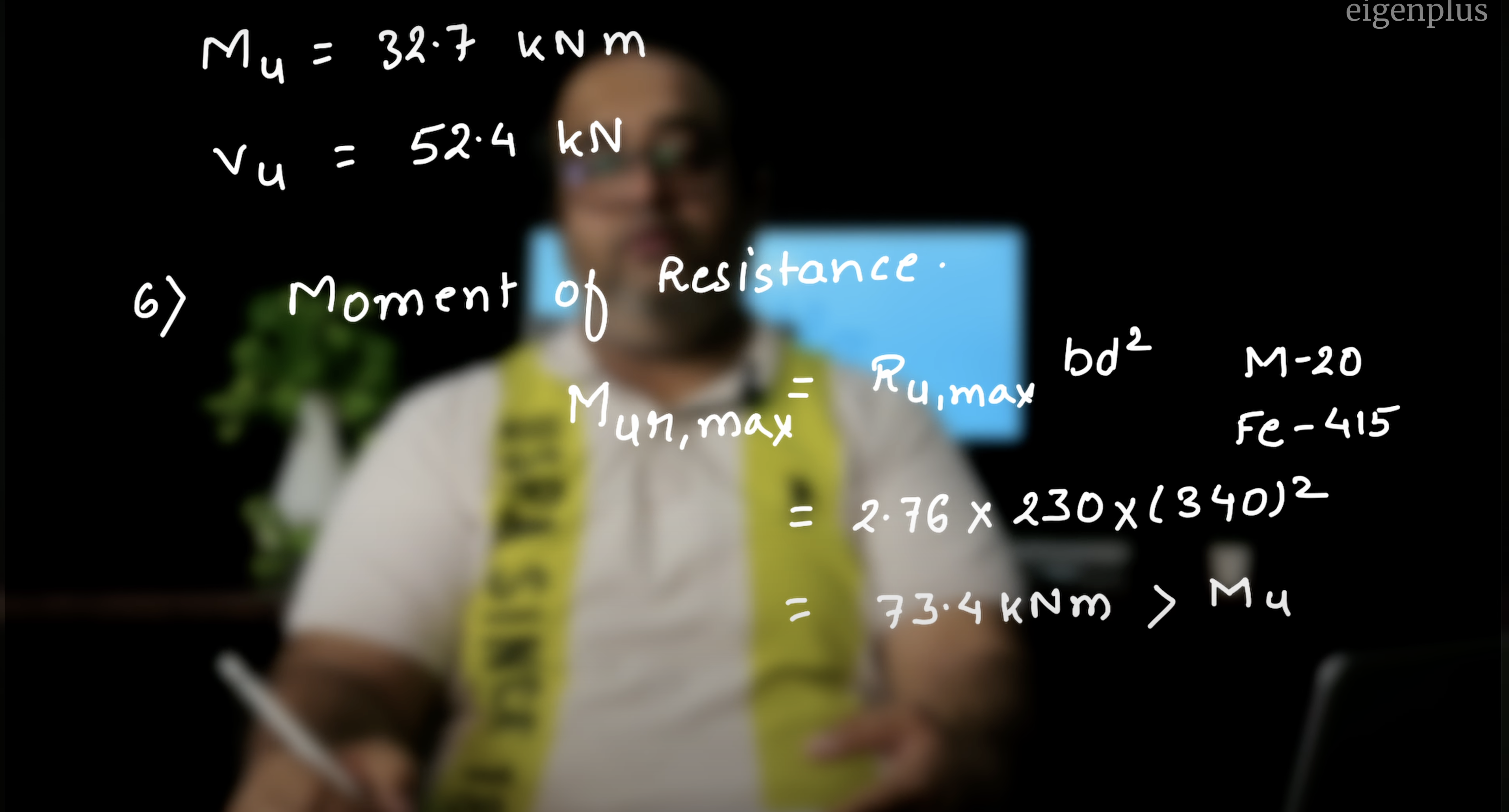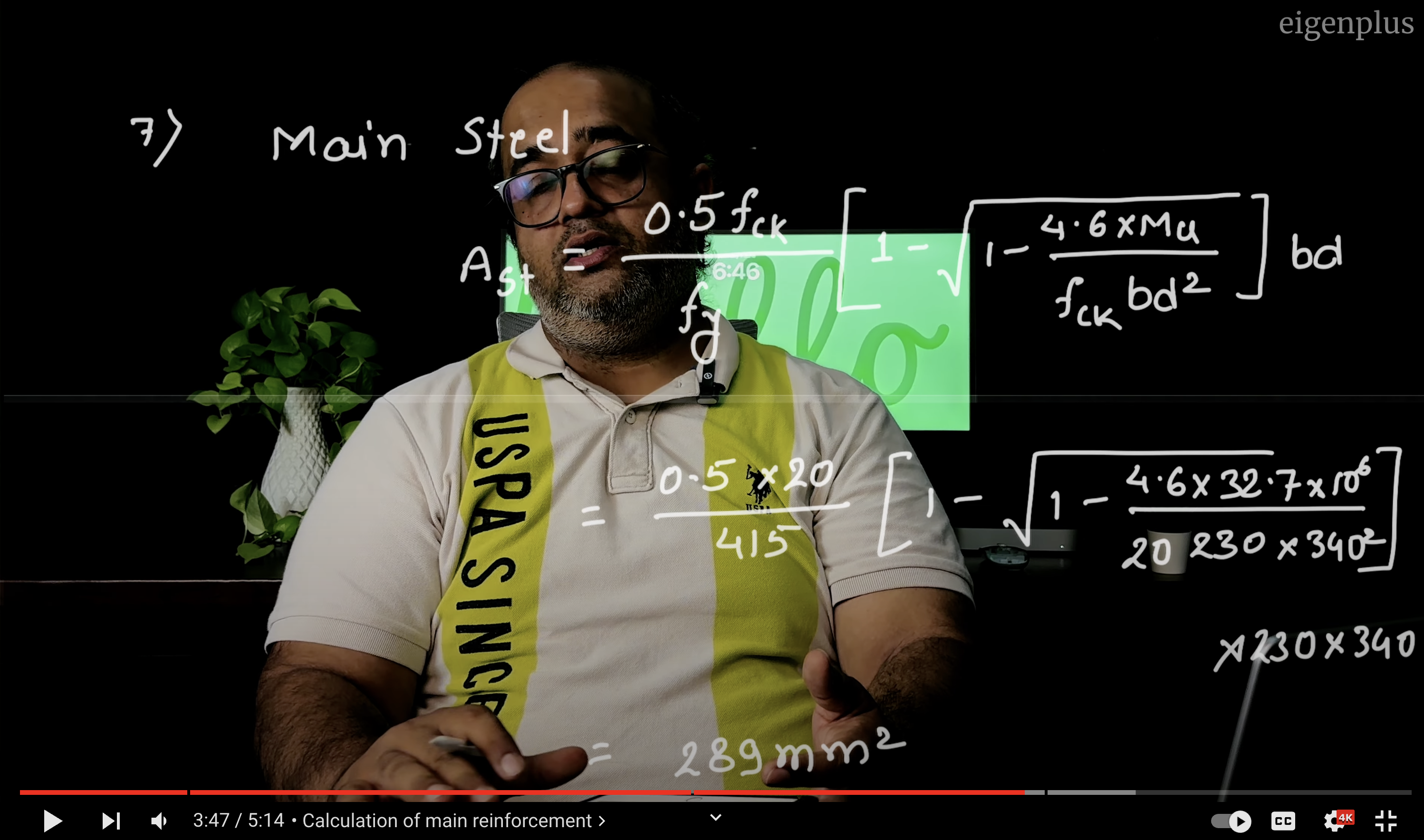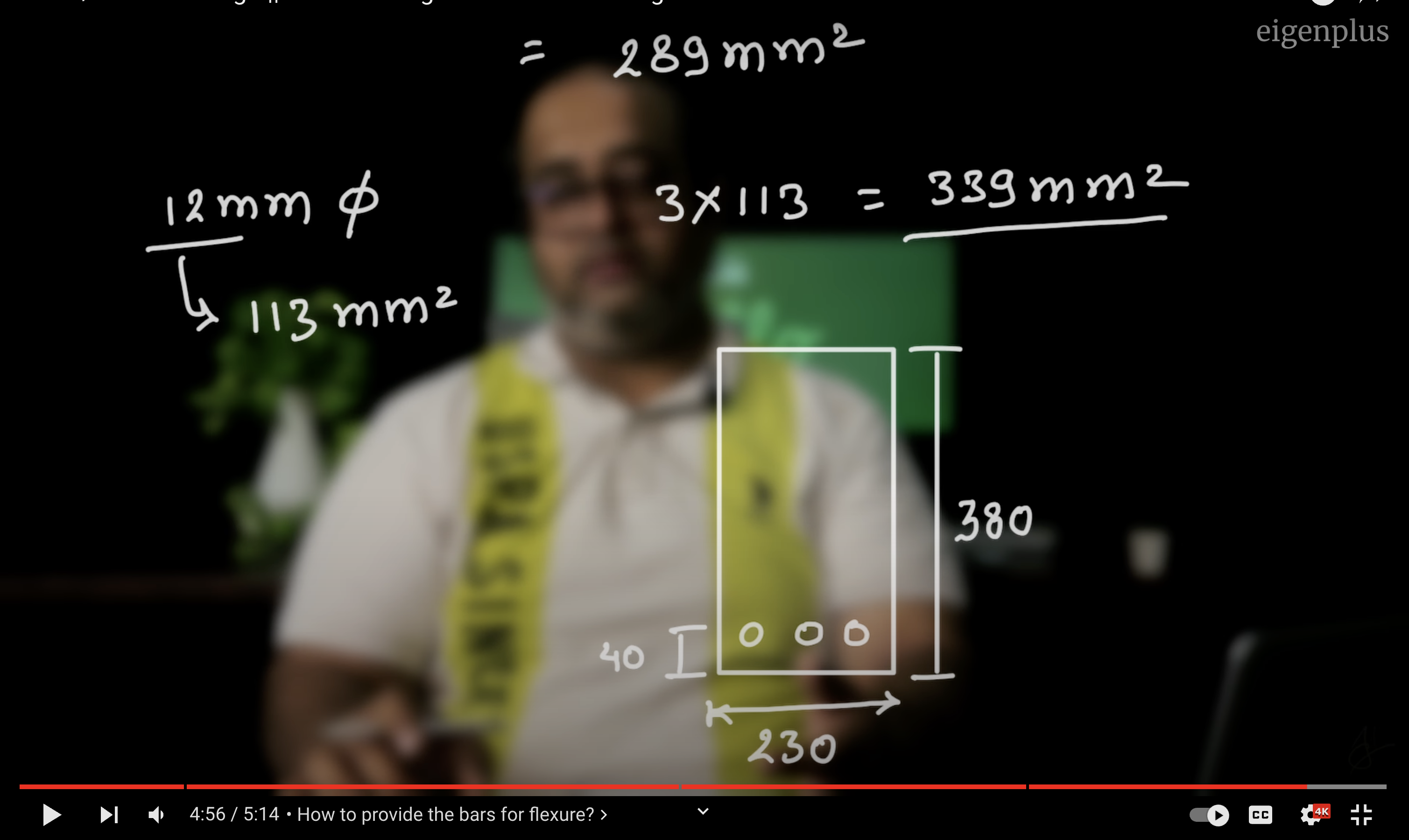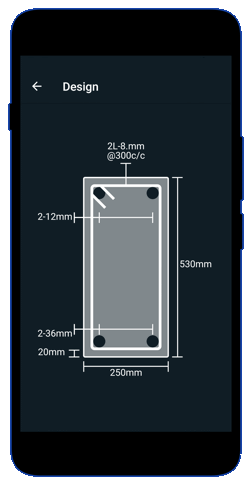Welcome to Igen Plus! In this blog post, we’ll walk you through the process of designing a beam for flexure based on the loads calculated in our previous video. If you missed that, you can find the link in the description below. Let’s get started with designing our simply supported beam to handle the bending moments and shear forces.
Introduction
In our previous video, we calculated the following for our beam:
- Ultimate Moment ($ M_u $) = 32.7 kNm
- Shear Force ($ V _u$) = 52.4 kN
Using these values, we’ll design the beam to ensure it can safely resist these forces.
Step 1: Calculating the Moment of Resistance

The first step in designing our beam is to calculate the ultimate moment of resistance ($ M_{ur} $). This value should be greater than the applied bending moment to ensure safety.
Formula for Ultimate Moment of Resistance
The ultimate moment of resistance ($ M_{ur} $) can be calculated using the formula:
$$ M_{ur} = R_{u,\text{max}} \times b \times d^2 $$
Where:
- $ R_{u,\text{max}} $ is a coefficient that depends on the material properties.
- $ b $ is the width of the beam.
- $ d $ is the effective depth of the beam.
For our beam, we are using M20 concrete and Fe 415 steel. From the IS code table, $ R_{u,\text{max}} $ is 2.76.
Given:
- $ b = 230 $ mm
- $ d = 340 $ mm
Plugging these values into the formula:
$$ M_{ur} = 2.76 \times 230 \times 340^2 $$
$$ M_{ur} = 73.4 \text{ kNm} > 32.7 \text{kNm}$$
This value is much greater than the applied moment of 32.7 kNm, indicating our beam is safe in terms of ultimate resistance.
Step 2: Calculating Main Reinforcement
Next, we need to calculate the required area of main reinforcement ($ A_{st} $) to resist the bending moment.

Formula for Main Reinforcement
The area of main reinforcement can be calculated using:
$$ A_{st} = 0.5 \times \frac{f_{ck}}{f_y} \times \left(1 – \sqrt{1 – \frac{4.6 \times M_u}{f_{ck} \times b \times d^2}} \right) \times b \times d $$
Where:
- $ f_{ck} $ is the characteristic compressive strength of concrete (20 MPa for M20).
- $ f_y $ is the yield strength of steel (415 MPa for Fe 415).
- $ M_u $ is the ultimate moment (32.7 kNm).
Plugging in the values:
$$ A_{st} = 0.5 \times \frac{20}{415} \times \left(1 – \sqrt{1 – \frac{4.6 \times 32.7 \times 10^6}{20 \times 230 \times 340^2}} \right) \times 230 \times 340 $$
$$ A_{st} = 289 \text{ mm}^2 $$
This is the required area of main reinforcement.
Providing the Main Bars
To provide the required reinforcement, we’ll use 12 mm diameter bars. Each 12 mm bar has an area of 113 mm².
Providing 3 bars:
$$ 3 \times 113 = 339 \text{ mm}^2 $$
This area is greater than the required 289 mm², ensuring the section is safe.
Step 3: Detailing the Section for beam design

Let’s visualize the beam section with the provided reinforcement:
- Depth of the beam: 380 mm
- Effective depth: 340 mm (considering 40 mm clear cover)
- Width of the beam: 230 mm
- Main reinforcement: 3 bars of 12 mm diameter
- Clear cover: 40 mm
Beam Section Diagram
Here is a simple sketch of the beam section:
- The three circles represent the 12 mm diameter bars placed within the 230 mm width.
- The clear cover of 40 mm ensures the bars are positioned safely within the concrete.
Conclusion
We’ve successfully designed a simply supported beam to resist the given loads. The calculated moment of resistance and provided reinforcement ensure the beam’s safety and structural integrity.
Beam design
- RCC Beam Design is a free app for designing reinforced concrete beams as per Indian Standards.
- RCC Design and detailing could be performed by Limit State Method specified in IS456:2000
- Option to save the design projects in local storage.
- Detailed calculation steps presented for verification and validation.

This article was crafted by a group of experts at eigenplus to ensure it adheres to our strict quality standards. The individuals who contributed to this article are:
Author


